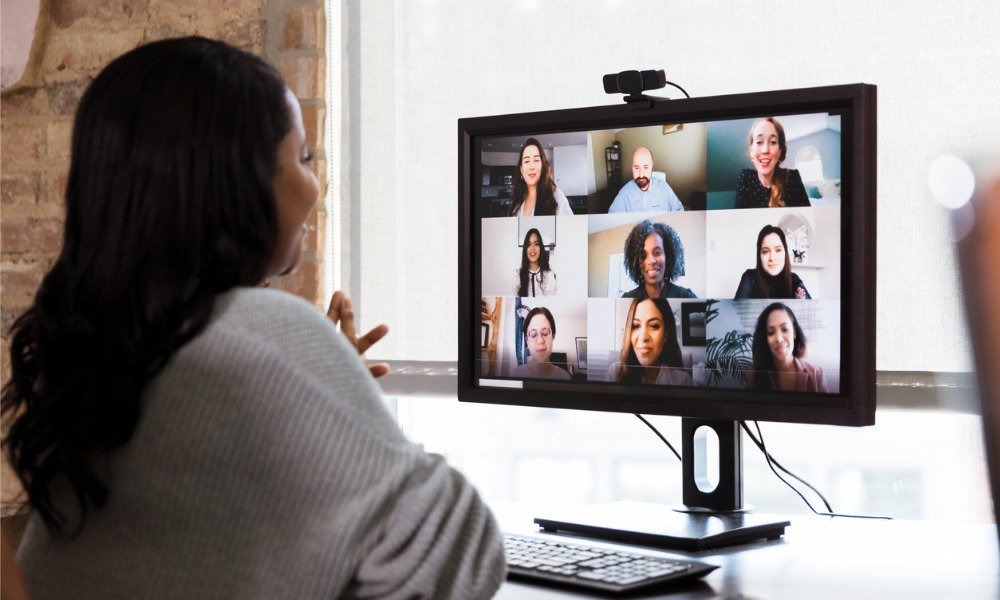
Appspace chief people officer reveals the five instruments her company relies upon

HR leaders across every industry can attest that one of the biggest challenges in remote work is maintaining employee engagement. Of course, if employees feel connected to their colleagues and engaged by their work, they’re more likely to stay and thrive at the company.
Appspace, a global HR tech firm with offices around the world, relies upon various measures to build and maintain engagement amongst its dispersed workforce. Unlike most companies, Appspace has had a leg up during the COVID-19 pandemic because it has allowed employees to work from home since the firm’s inception 20 years ago. “Our people were used to the rhythm of working remotely,” Holly Grogan, chief people officer at Appspace, told HRD.
Grogan says the company’s “ah-ha” moment regarding employee engagement in a hybrid world was internal communications, crediting Lauren Patton – Appspace’s first dedicated internal comms leader – with creating strategies, consistent avenues for communication and transparent messaging to keep employees on the same page. Patton led the launch of Appspace's first corporate intranet and oversees the distribution of weekly newsletters. The intranet hosts online communities for cooking, pets and other hobbies, inviting employees to share pictures and ideas.
“It’s a remote water cooler, if you will,” Grogan says. Meanwhile, the weekly newsletter informs employees on what’s going on in the different areas of the business. The newsletter is accessible in different forms, such as the employee app, Slack and email.
“Engagement is about meeting people where they are instead of trying to pull them to you,” Grogan says. “Say the same thing multiple times in multiple ways, so that you can get to people when they’re ready to digest information how they want.”
Meetings are also an important aspect of Appspace’s internal communications strategy. Grogan says there are hour-long town halls, which give business updates and announcements, and all-hands meetings, which are capped at 30 minutes and centered on a particular topic. Both virtual gatherings (which average about 65% attendance, Grogan says) end with a Q&A that helps company leaders learn what’s on employees’ minds. Following each meeting, a survey is sent out to solicit feedback, which the company has used to make changes, such as featuring more product discussion and slimming down the agenda to allow for sufficient time for the Q&A.
“The only thing companies can do when it comes to connecting with talent is to really listen,” Grogan says. “You think you know what people want and need, but if you stop, ask the question and listen, you may learn something.”
Traditionally, employee resource groups (ERGs) are influential in boosting employee engagement. ERGs consist of employees who volunteer their time and effort to foster an inclusive workplace. Due to their motivations, needs and the general nature of ERG work, employees who lead these groups are more likely to be Black, Indigenous and people of color (BIPOC) and oftentimes women. ERGs are a way for underrepresented groups to band together to recruit more talent like them into their companies and make sure that talent feels supported and gets promoted.
According to Grogan, Appspace has a diversity and inclusion team that’s structured less like an ERG and more like a pillar of the business, working closely with the HR team. “They’re the vision and ideas behind what we want to do as an organization and HR is the muscle for their ideas,” Grogan says. “When you think about inclusion, that should be part of what defines your culture. It should be systemic and what you live.”
Appspace’s HR team also measures its Employee Net Promoter Score through monthly pulse sampling and then annually. To gauge how employees are connected to the company, the team analyzes meeting attendance, newsletter click-through rate, attrition rate, mobility within the organization and other factors.
“Empathy has become a critical business skill,” Grogan says. “All of us as teammates and colleagues must be able to think about what somebody else is going through, so we can connect with them. In this hybrid world, our home is no longer about our friends and family – it’s for our colleagues, too. You need to have empathy so you can check in on people. That creates connection.”